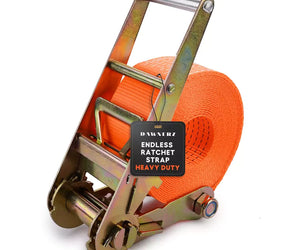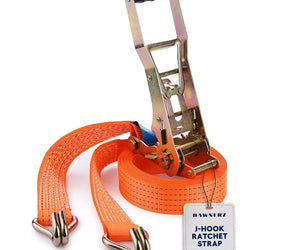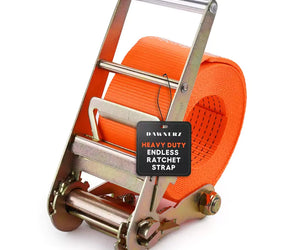Terminology
Understanding key industry terminology is essential for selecting, inspecting, and properly using synthetic tie-downs. The following glossary covers the most commonly used terms in cargo securement, based on recognized standards from WSTDA and transportation authorities.
Abrasion
The surface wear or damage caused by friction between materials or objects. Common in areas where straps contact rough or sharp edges.
Aggregate Working Load Limit (WLL)
The combined working load limit of all tie-down devices securing a cargo item. The total WLL must meet or exceed the weight of the cargo being transported.
Anchor Point
A fixed, rated attachment location on a vehicle — such as sidewalls, flooring, or frame — used to connect tie-downs. Anchor points must have a marked working load limit.
Breaking Strength
The amount of force, typically measured in pounds or kilograms, at which a tie-down or component will fail.
Coating
A protective layer applied to webbing or hardware to resist environmental exposure, chemical damage, moisture, and abrasion.
Design Factor
The safety ratio between the breaking strength and the working load limit of a strap. For synthetic web tie-downs, this is typically 3:1.
Direct Tie Down
A tie-down configuration where the strap connects directly between an anchor point and the cargo itself.
Elongation
The amount a strap stretches under tension, expressed as a percentage of its original length. Different materials have different elongation rates.
End Fitting (Fitting)
The load-bearing component (such as a hook or ring) attached to a tie-down strap for securing to an anchor point.
Fiber
A synthetic filament used to create yarn, which is woven into the webbing and threads used in strap construction.
Indirect Tie Down
A configuration where the strap passes over, around, or through the cargo and connects to anchor points on both sides of the vehicle. This increases downward pressure for better securement.
Length
The total usable length of the tie-down, measured from end fitting to end fitting.
Mandrel
The rotating barrel within a ratchet or winch where the strap webbing is wrapped during tensioning.
Proof Load Test
A non-destructive test applying 1.5 times the rated working load limit to verify strap strength without causing failure.
Protection (Edge Protection)
A material or sleeve used to shield straps from sharp edges, abrasion, or cutting during use. Not all protective materials prevent cutting.
Qualified Person
An individual who has demonstrated expertise in cargo securement, either through formal education, certification, or extensive field experience.
Synthetic Webbing
A high-strength woven material made from synthetic fibers (e.g. polyester or nylon) used in manufacturing ratchet straps and tie-downs.
Tensioning Device
A mechanical tool that applies and maintains tension in a tie-down. Common examples include ratchets, winches, and over-center buckles.
Thread
The strong synthetic yarn used in the stitching of tie-down webbing and hardware attachment points.
Tie Down
A strap assembly made from synthetic webbing, with or without end fittings, used to secure cargo. Examples include ratchet straps, winch straps, and webbing-only configurations.
Vehicle
Any commercial or personal transport unit used to carry cargo — including trailers, flatbeds, vans, and utility trucks.
Webbing
The flat woven fabric forming the body of a tie-down strap. Must meet strength, durability, and stretch standards outlined by WSTDA.
Winch
A mounted tensioning device used on trucks or trailers to tighten and secure winch straps via a rotating mandrel.
Working Load Limit (WLL)
The maximum safe operating load of a strap or component, assigned by the manufacturer. WLL is typically calculated as one-third of the strap’s minimum breaking strength.
Yarn
The fiber strands that are spun together to make the webbing and stitching thread in synthetic tie-downs.



